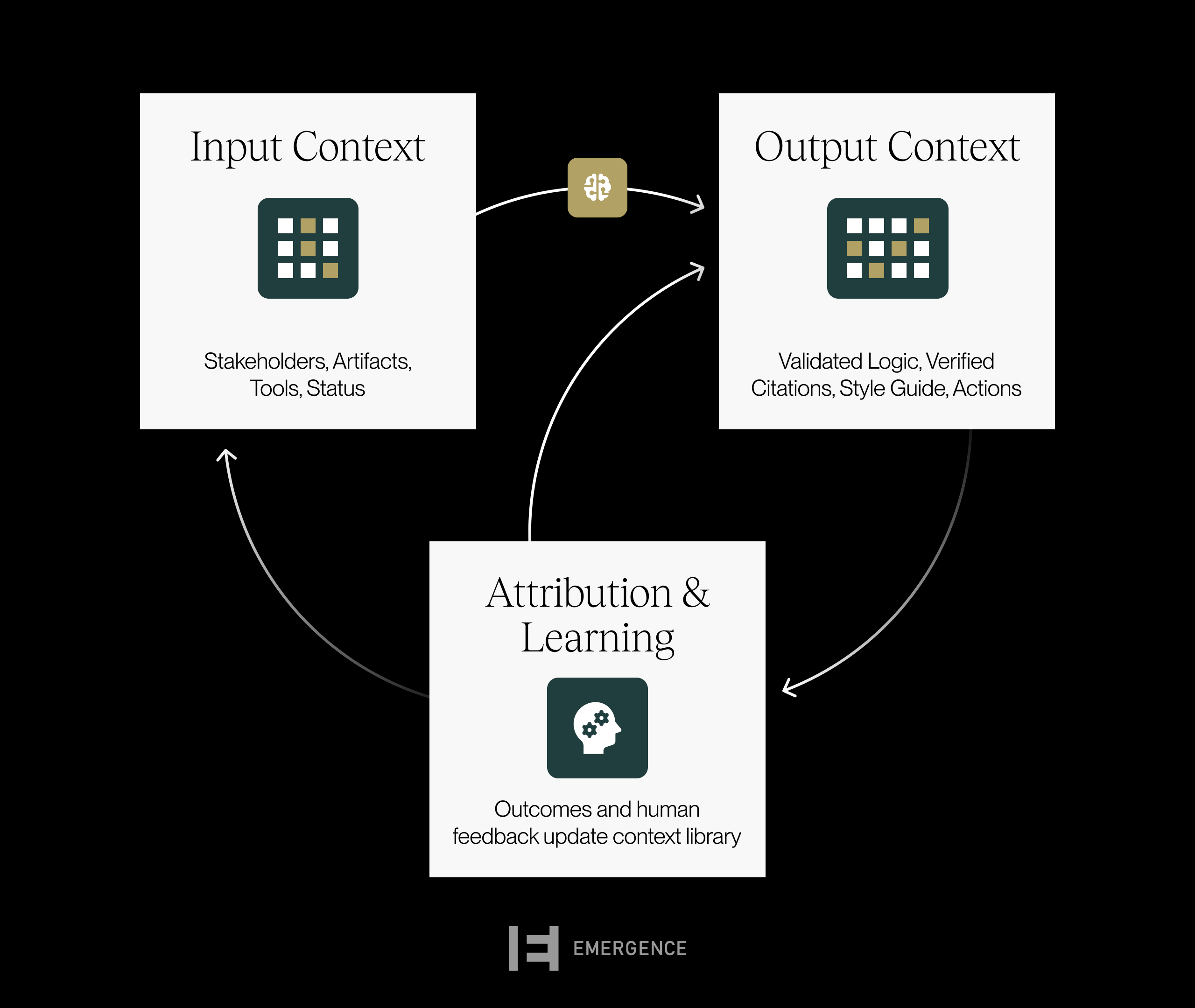Love, love, love.
John Lennon was wrong. At least when it comes to AI.
All you need is context.
Foundation models are incredible. They can write, code, summarize, and reason at superhuman scale. But they’re optimized for generic use. Real work isn’t generic. It happens inside teams, tools, systems, and decisions that are unique to every organization.
That’s why the most valuable AI applications of the next decade won’t just build on foundation models. They’ll build Systems of Context around them.
What Is a System of Context?
A System of Context is an integrated architecture that owns, organizes, and synthesizes contextual information to operationalize AI-powered actions. It’s a closed-loop learning system that maximizes value capture (and defensibility) with every interaction.
It connects foundation models to everything that makes a company unique, transforming generic outputs into specific, actionable results. There are six main types of context that matter:

Put simply, models generate intelligence. Context generates impact.
Every Action Strengthens the System
A System of Context learns through use. Each action, output, or decision feeds back into the system, enriching its understanding of the user, the task, and the environment.
Here’s how the loop works:

This continuous feedback loop ensures that the more the system is used, the smarter and more precise it becomes.
Why Context Is the Moat
Every enterprise is chasing the same question: how do you get defensible value from AI when everyone has access to the same models?
The answer is Value Over Model: the surplus value a company creates when its System of Context elevates the raw model output into something uniquely useful.
Context drives that value in four ways:
- It improves quality: more accuracy, fewer hallucinations, and higher trust.
- It enables action: secure access to tools and data for real results.
- It compounds: every interaction enriches the context graph.
- It builds defensibility: proprietary context becomes impossible to replicate.
The difference between companies experimenting with AI and those generating lasting advantages will come down to how deeply they’ve integrated AI into real workflows.
VoM is essentially the value attributable to context: the measure of how much smarter, faster, and more defensible your system becomes because of it.
From Models to Systems
We’re already seeing early versions of this shift. Companies like Bolt, project44 and Mezmo are building AI copilots that don’t just respond. They act on contextual data inside workflows. Enterprise platforms like Zoom are doing the same, connecting AI to proprietary customer, product, and workflow data.
The pattern is clear: the winners won’t be those with the most powerful models. They’ll be the ones who build the most complete systems around them.
There’s nothing AI can do that can’t be done.
All AI needs is context, and context is all AI needs.


